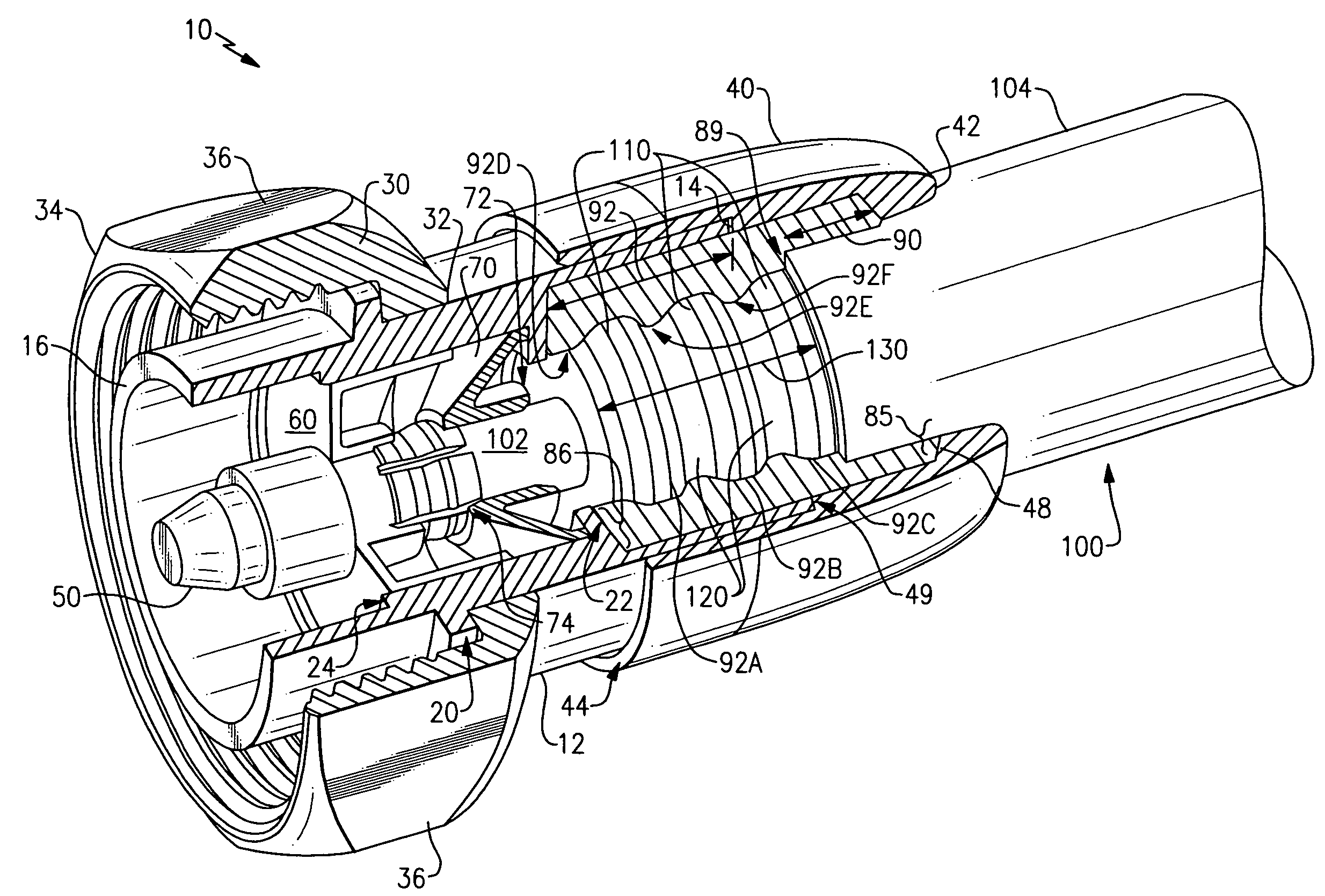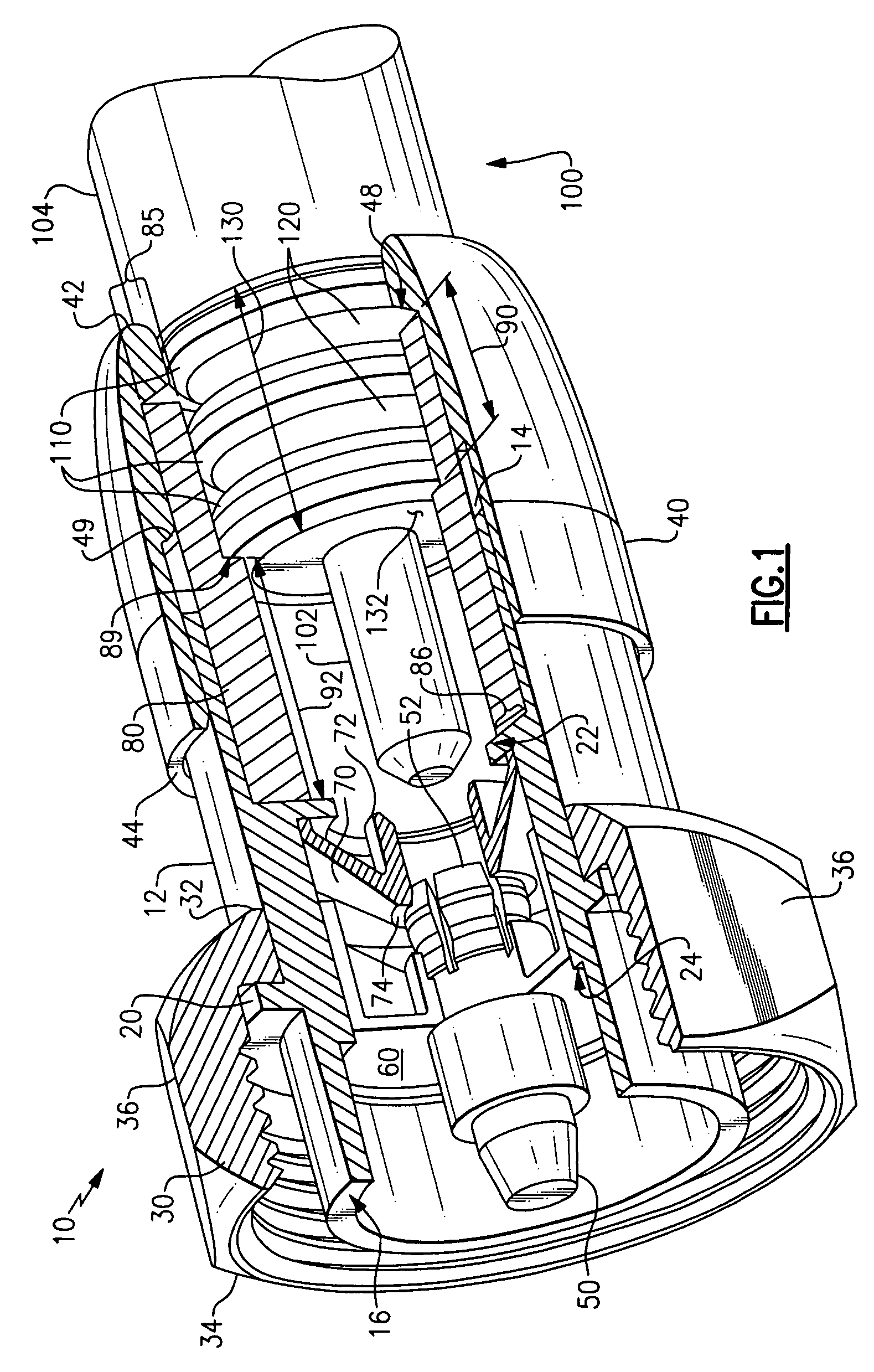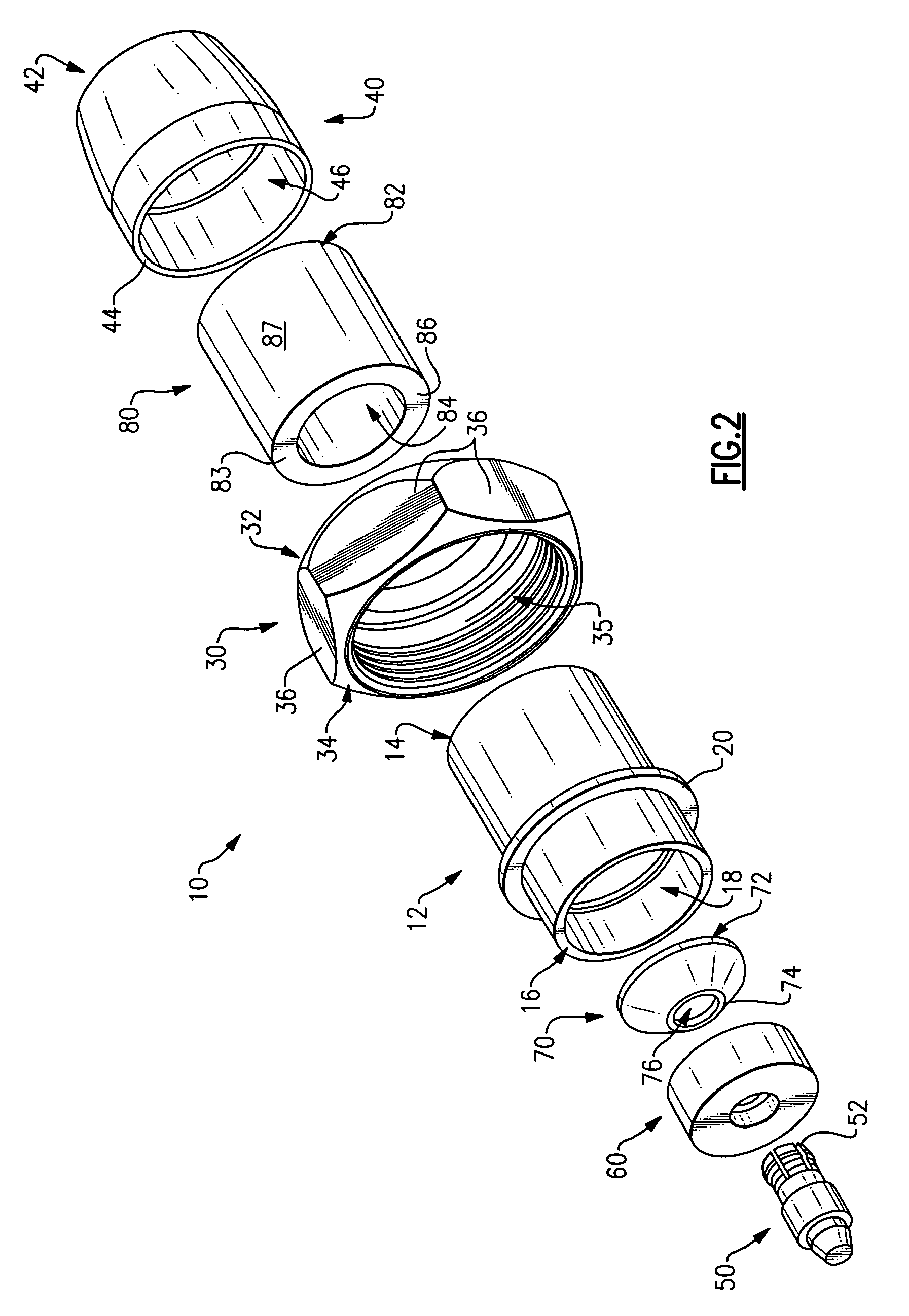Compact compression connector with flexible clamp for corrugated coaxial cable
- Summary
- Abstract
- Description
- Claims
- Application Information
AI Technical Summary
Benefits of technology
Problems solved by technology
Method used
Image
Examples
Embodiment Construction
[0025]Referring initially to FIGS. 1 and 2, an exemplary compression connector 10 is shown, as is a portion of a segment of corrugated coaxial cable 100. In the illustrated embodiment, the corrugated cable segment 100 is annular corrugated coaxial cable; however, it should be noted that each of the embodiments described herein is equally applicable to all types of corrugated coaxial cable, including, but not limited to, annular corrugated coaxial cable, spiral corrugated coaxial cable, and helical corrugated coaxial cable. However, regardless of the specific type of corrugated coaxial cable, and as shown in FIG. 1, the cable segment 100 generally includes a distally protruding center conductor 102, an outer protective jacket 104, a plurality of conductive corrugation peaks 110, and a plurality of conductive valleys 120. The peaks 110 and valleys 120 collectively form what is hereinafter referred to as the “exposed corrugated region” of the corrugated coaxial cable segment 100, where...
PUM
 Login to View More
Login to View More Abstract
Description
Claims
Application Information
 Login to View More
Login to View More - R&D
- Intellectual Property
- Life Sciences
- Materials
- Tech Scout
- Unparalleled Data Quality
- Higher Quality Content
- 60% Fewer Hallucinations
Browse by: Latest US Patents, China's latest patents, Technical Efficacy Thesaurus, Application Domain, Technology Topic, Popular Technical Reports.
© 2025 PatSnap. All rights reserved.Legal|Privacy policy|Modern Slavery Act Transparency Statement|Sitemap|About US| Contact US: help@patsnap.com



